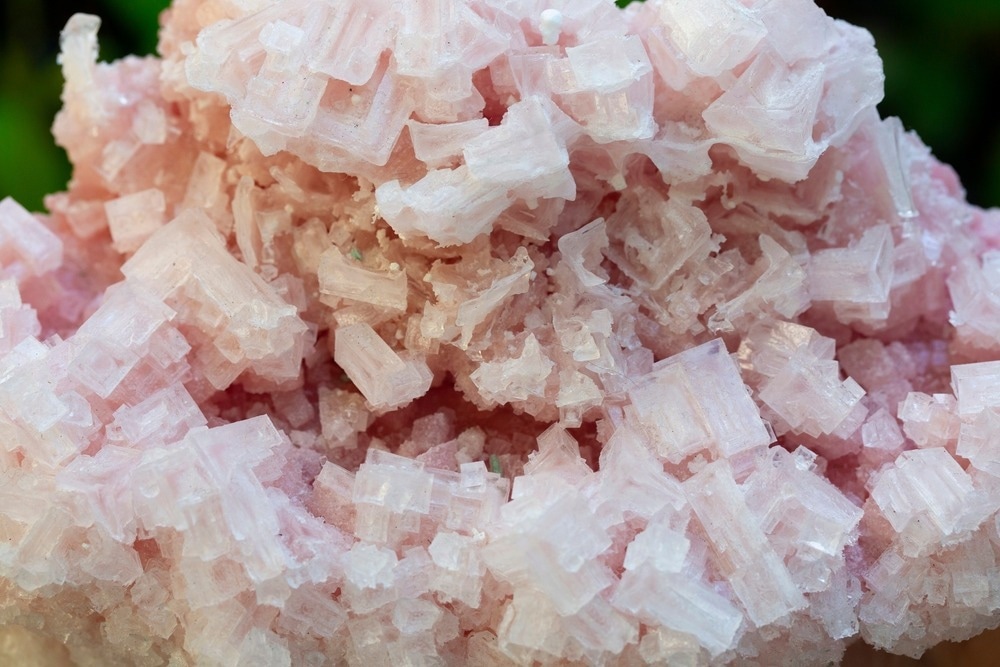In a recent article in Minerals, researchers introduced an optical methodology designed to monitor moisture condensation on halite surfaces in real time. The approach leverages high-resolution imaging under controlled microclimatic conditions to detect subtle surface changes associated with water film formation, offering a promising alternative to conventional laboratory techniques.

Image Credit: Cagla Acikgoz/Shutterstock.com
Background
The moisture adsorption process on salt surfaces involves complex phenomena, including molecular water layer formation, droplet nucleation, and eventual runoff. These processes are typically driven by relative humidity (RH) levels, with initial water film formation occurring at around 60% RH and more pronounced wetting and droplet formation at higher humidity levels.
Existing analytical and measurement techniques provide detailed insights into moisture phenomena but are often limited to laboratory settings and are unsuitable for continuous, in situ environmental monitoring. These methods can be sensitive to external conditions, require elaborate apparatus, and may disturb the delicate environments they aim to protect. Therefore, an optical approach based on visible light imaging, which can be implemented with accessible technology, offers an attractive solution.
The Current Study
The core of this research involves a systematic combination of high-resolution imaging, controlled environmental simulation, and advanced image analysis. A high-resolution digital camera, equipped with a precise lighting system utilizing constant LED illumination, was used to record the state of salt crystals placed inside a climate chamber capable of accurately regulating temperature and relative humidity.
The experimental setup involved mounting the halite crystals within an internal chamber, which was then placed inside a larger climate chamber to maintain stable microclimatic conditions. The camera was fixed at an optimal distance to capture detailed images of the crystal surface, focusing on a predefined inspection window coated with a black layer to minimize extraneous reflections and interferences.
Images were captured at intervals ranging from 30 seconds to five minutes, facilitating the observation of slow and rapid changes in surface wetness as environmental conditions varied. The image processing pipeline included filtering techniques to mitigate sensor noise and compensate for vibrational artifacts caused by chamber movements. The primary metric for surface wetness detection was the pixel brightness intensity, which was analyzed over time to quantify surface changes related to moisture condensation.
The analysis employed statistical and outlier detection methods, calculating the percentage of outlier pixels (OPs)—those with brightness values surpassing a set noise threshold.
An increase in OP percentage signified the growth of water films or droplets on the surface. The researchers carefully calibrated thresholds based on initial measurements at dry conditions and monitored the evolution of surface wetness in relation to controlled humidity ramps.
They identified key relative humidity thresholds—below 65%, between 65-75.5%, 75.5-77%, and above 77%—corresponding to different surface states, from dry to active degradation. The process also involved documenting the temporal progression of water droplet formation and runoff to relate optical signals to physical phenomena.
Results and Discussion
Experimental data demonstrated that moisture condensation on halite crystals begins at approximately 60% relative humidity, corresponding to the formation of a nanometric water film that subtly alters surface optical characteristics. Initially, at around 65% RH, small water films form, leading to detectable changes in pixel brightness indicative of early adsorption.
As humidity increases, the water film grows exponentially, resulting in more pronounced optical signals. Between 65% and 75.5% RH, the surface enters a quasi-stable condensation state where the water film remains relatively uniform and stable, but with incremental growth observed through the increase in outlier pixel percentage. During this phase, the crystal surface is highly susceptible to becoming more wetted, setting the stage for potential transition into more active degradation.
When humidity approaches around 77%, the surface undergoes a critical shift into an unstable transition state, characterized by the nucleation of water droplets. Time-lapse imaging visibly confirmed this phase, showcasing the gradual growth and merging of droplets, eventually leading to dripping phenomena observed after several hours at about 78% RH.
These droplets facilitate salt dissolution and surface erosion, marking the beginning of active degradation. The process was systematically documented, allowing for the classification of surface states into four categories: dry and early adsorption below 65%, stable water film formation between 65-75.5%, unstable wetness with droplet nucleation around 75.5-77%, and active degradation during wet droplet runoff above 77%.
Conclusion
The research validates the effectiveness of an optical imaging-based methodology for real-time, non-invasive monitoring of moisture condensation on halite crystals. This approach reliably detects early surface wetting, droplet formation, and runoff phenomena associated with increasing humidity levels.
By establishing clear optical thresholds corresponding to different surface states, the method offers an accessible and practical tool for environmental monitoring in sensitive settings like salt caves and mineral preservation sites. Its capability for continuous surveillance can significantly enhance early warning systems, enabling preventive measures before substantial degradation occurs.
Implementing such optical systems can support conservation efforts by providing vital data on microclimatic influences, allowing targeted microclimate regulation, and actively managing moisture risks.
Source:
Piga T., Jamróz P., et al. (2025). Interactions of Mineral Surfaces with Water Vapor: A Method for Analyzing Surface Condensation on Halite Crystals. Minerals 15(5):435. DOI: 10.3390/min15050435, https://www.mdpi.com/2075-163X/15/5/435